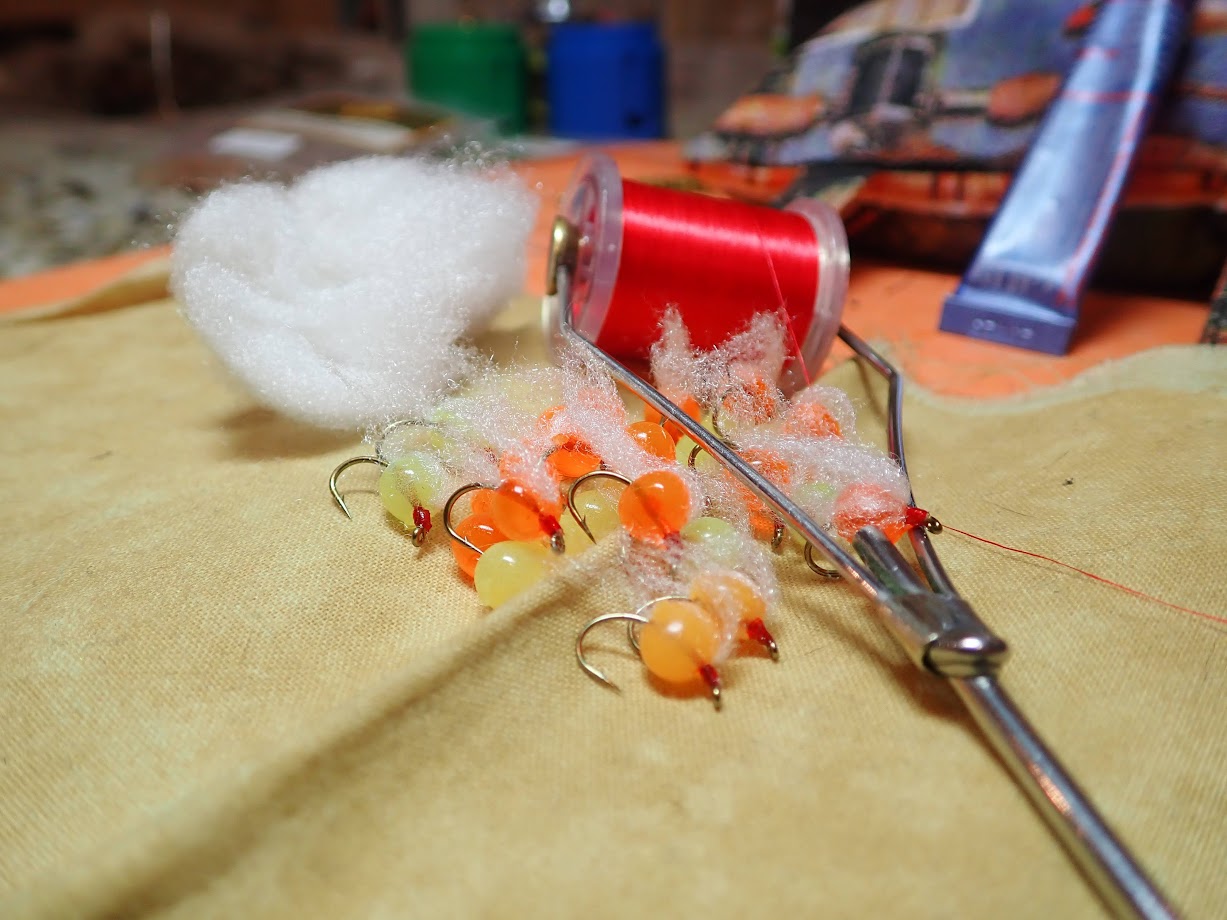Soft Egg Fly 11/14/2022 Photo Album
After a trip to the North Platte River below Grey Reef in March of 2013, I recognized the effectiveness of egg flies on that river in central Wyoming. That experience motivated me to tie some egg flies in preparation for our traditional March trip the following spring. I needed materials and guidance on tying a never before attempted pattern, so I journeyed to Charlie’s Fly Box in Old Arvada, and Dave, the salesperson behind the counter, pointed me in the right direction. I purchased soft otter eggs in apricot and translucent pink/red along with a white veil material and returned to my flying desk to make my first attempts at tying an egg fly.

Love the Veil on This One

Chartreuse Egg
I researched patterns on the internet and tied ten models for the upcoming return trip to the North Platte in March of 2014. These flies satisfied my needs for the next seven years, until I made a rare trip to the South Platte River below Deckers on 11/01/2022. During this venture I fished for a couple hours with minimal success, and I decided to experiment with fly changes. Early November was within the time frame of brown trout spawning season, and this surely suggested that loose brown trout eggs were a ready source of protein for rainbow trout and even adult brown trout. I was not having success with my salvation nymph and RS2, so why not field test an egg fly? I dug one of the apricot eggs that I tied seven years prior from my fleece wallet, and I knotted it to my line in a dry/dropper configuration below a pool toy hopper, and then I added the RS2 below the egg. I made a cast and concentrated on following the drift, and I concluded that the soft egg did not possess enough weight to allow it to bounce along the bottom. A tumbling fly along the bottom was the presentation that I was seeking, and I solved this concern by crimping a small split shot to my line just above the eye of the egg fly.

Apricot Egg
For the rest of the afternoon I drifted the egg and RS2 through deep troughs and moderate riffles on the South Platte River. The experiment paid off handsomely, as I landed two hook-jawed brown trout that grabbed the apricot sphere in a narrow band of slower moving water next to a deep run. The egg fly was a solid success, and I vowed to tie more to support my newfound reliance on egg flies for fall and spring fishing.

A More Distant Angle
I retrieved my egg tying materials from my storage cabinet, and I learned that I had two remaining apricot soft eggs, and fifteen translucent red/pink versions. An abundant clump of the white veil material satisfied my immediate needs. It was Saturday, so I decided to make a quick trip to Charlie’s Fly Box to augment my egg supply. Unfortunately the shop was out of apricot, so I bought some chartreuse eggs and returned home by way of the nearby Bass Pro Shop, but Bass Pro had no soft eggs whatsoever to offer this prospective customer. When I returned home, I fired up the computer and placed an order for apricot eggs from the source in Grand Junction, CO.
Since I planned to make a return visit to the South Platte River on Tuesday, November 8, I approached the tying bench and cranked out fifteen new eggs. The first two were apricot, and then I made four chartreuse and nine red/pink. I found a nice soft egg tying video and followed it to construct my egg flies. Tying the soft egg fly is a very simple process, and I tied fifteen eggs in slightly more than an hour. When I was done, I applied UV resin to the head of each fly, and this really added a nice touch to the red thread head. I am fairly certain that egg flies will be a significant new weapon in my fly fishing arsenal.
Like this:
Like Loading...
